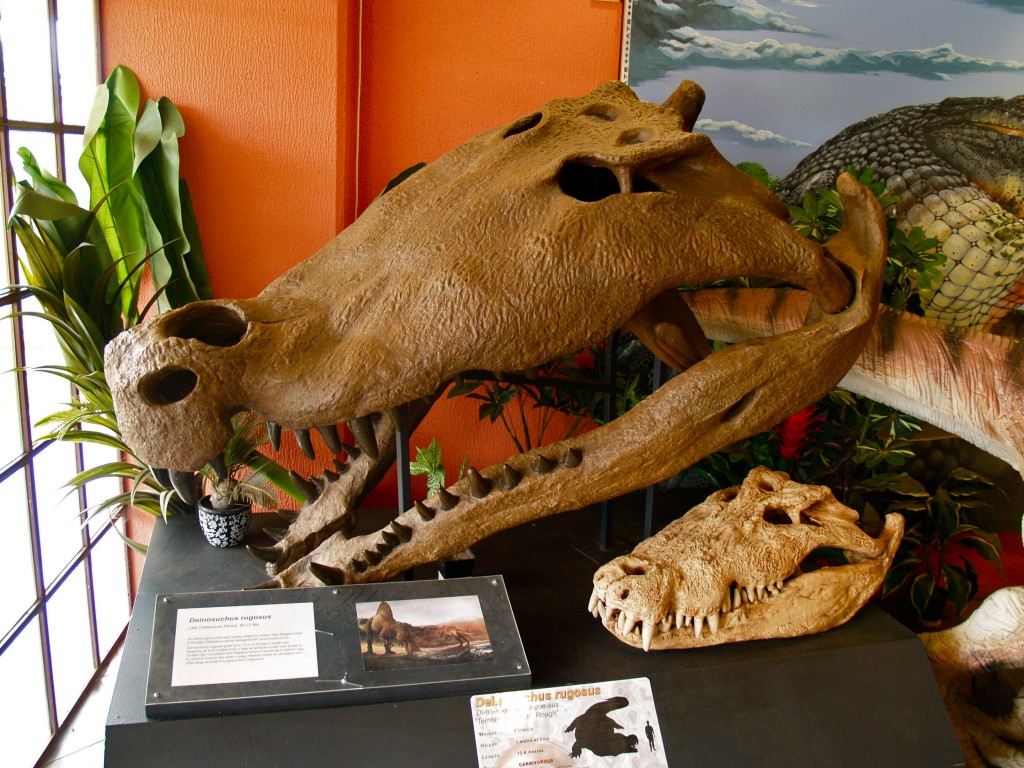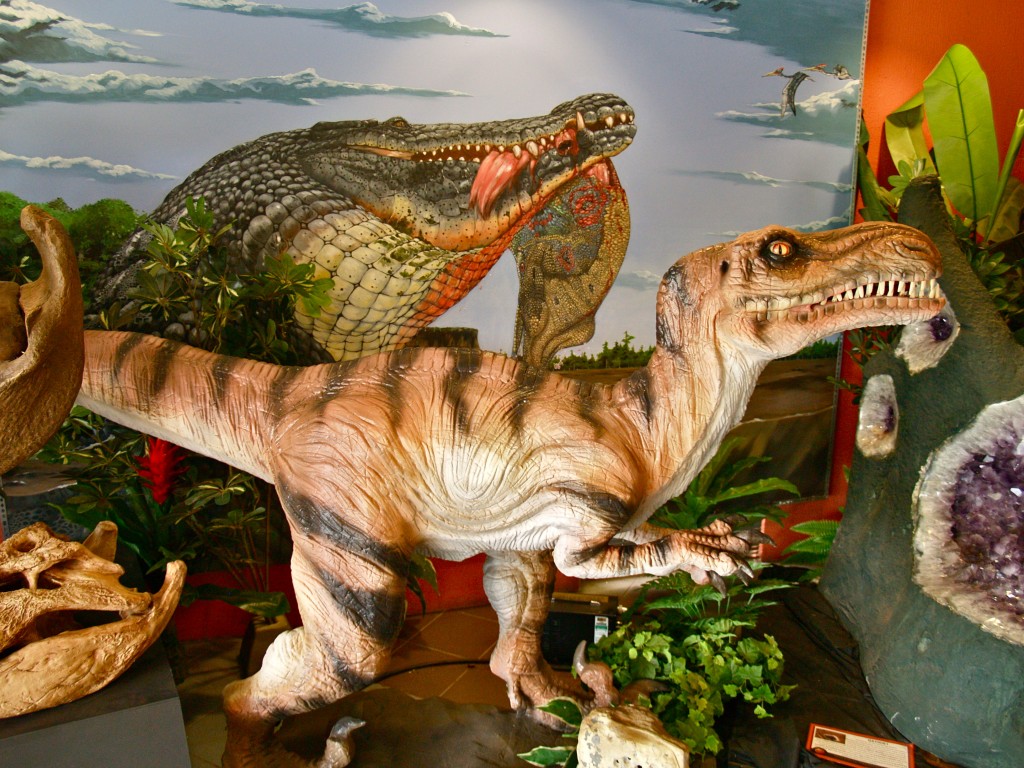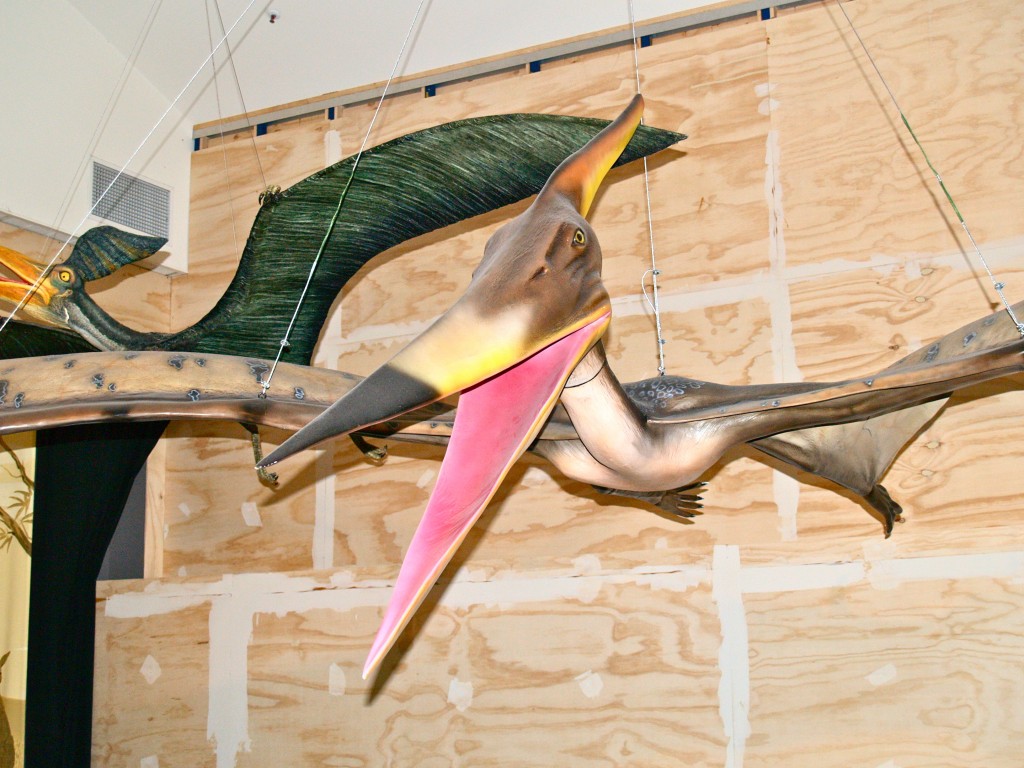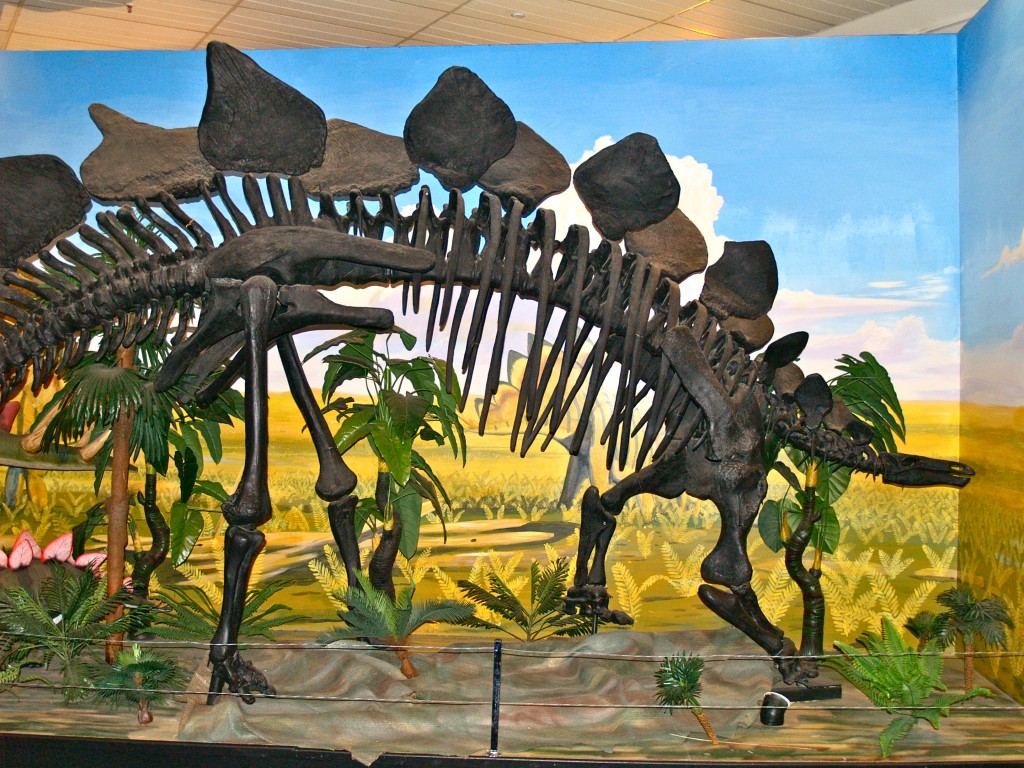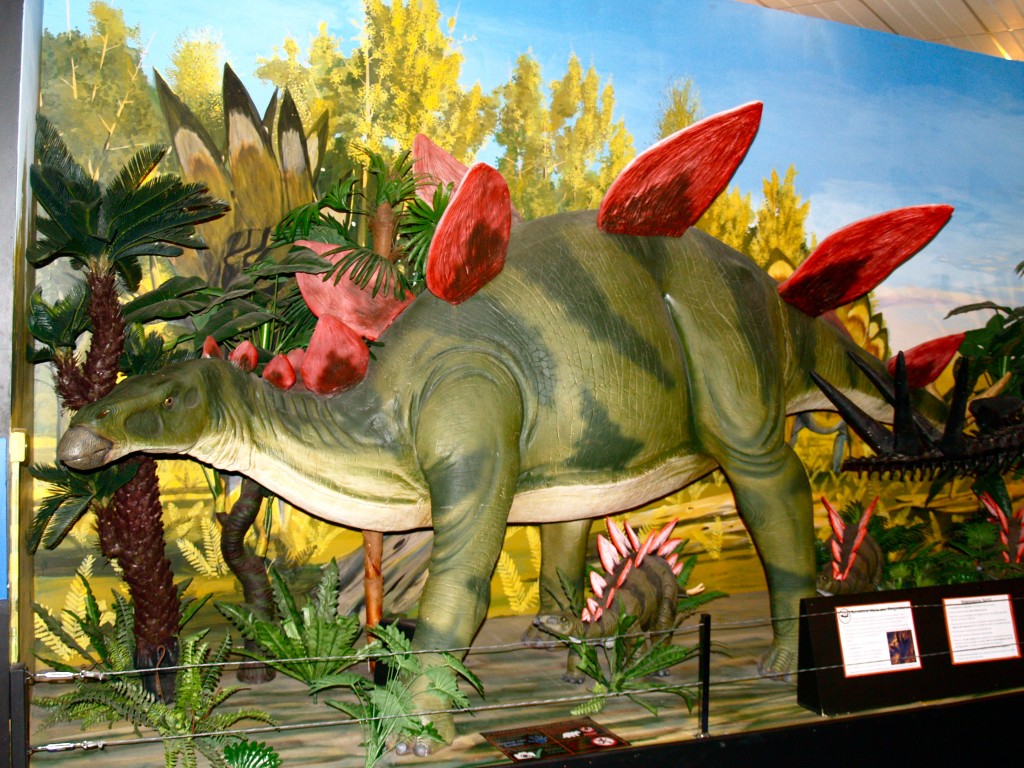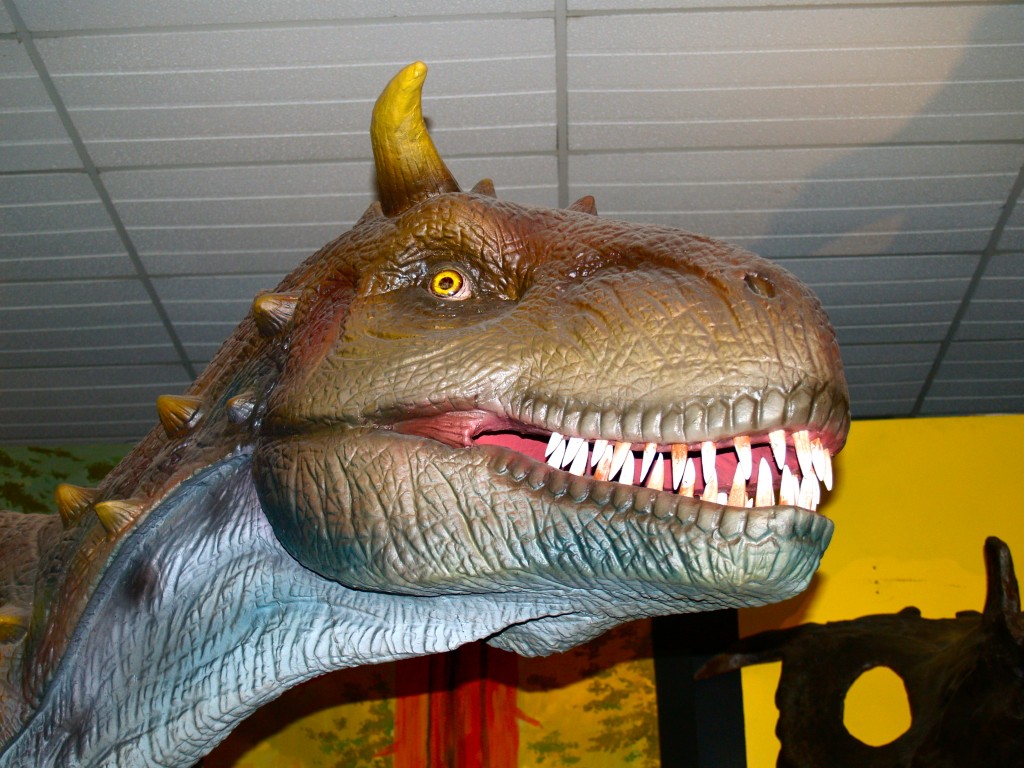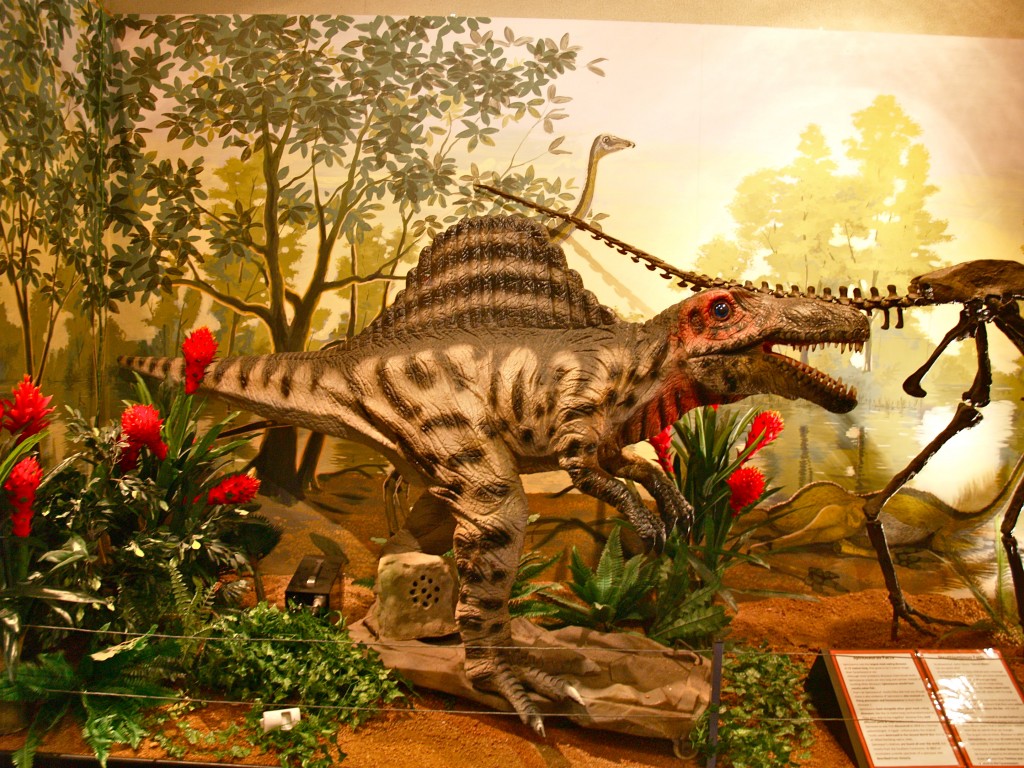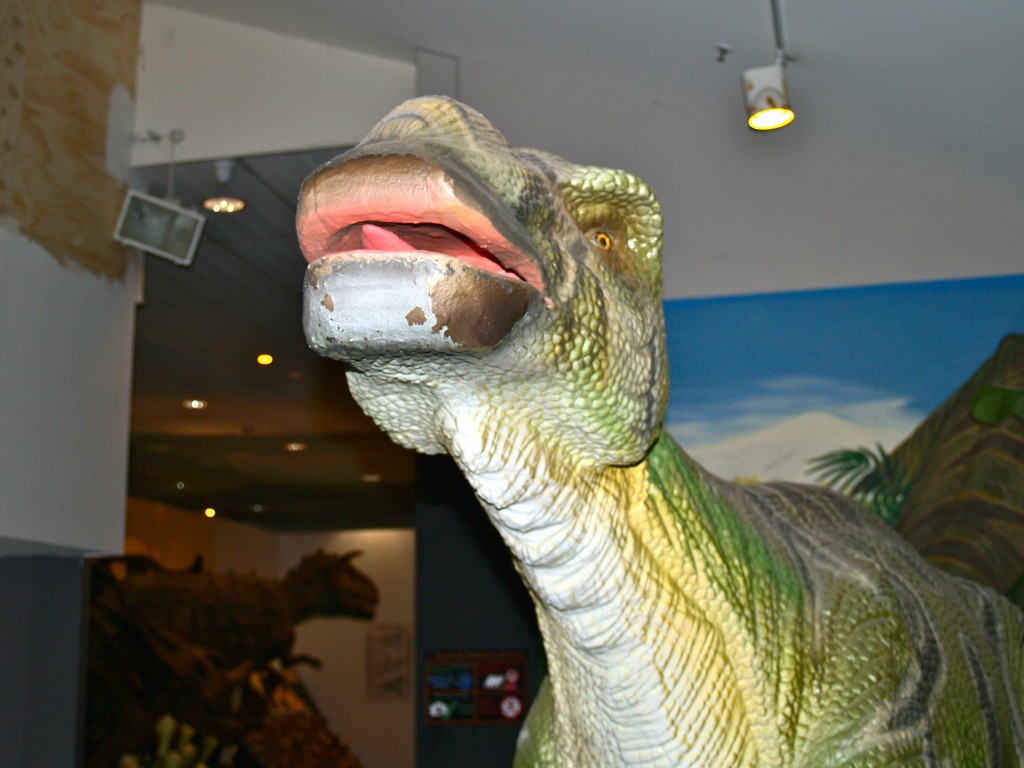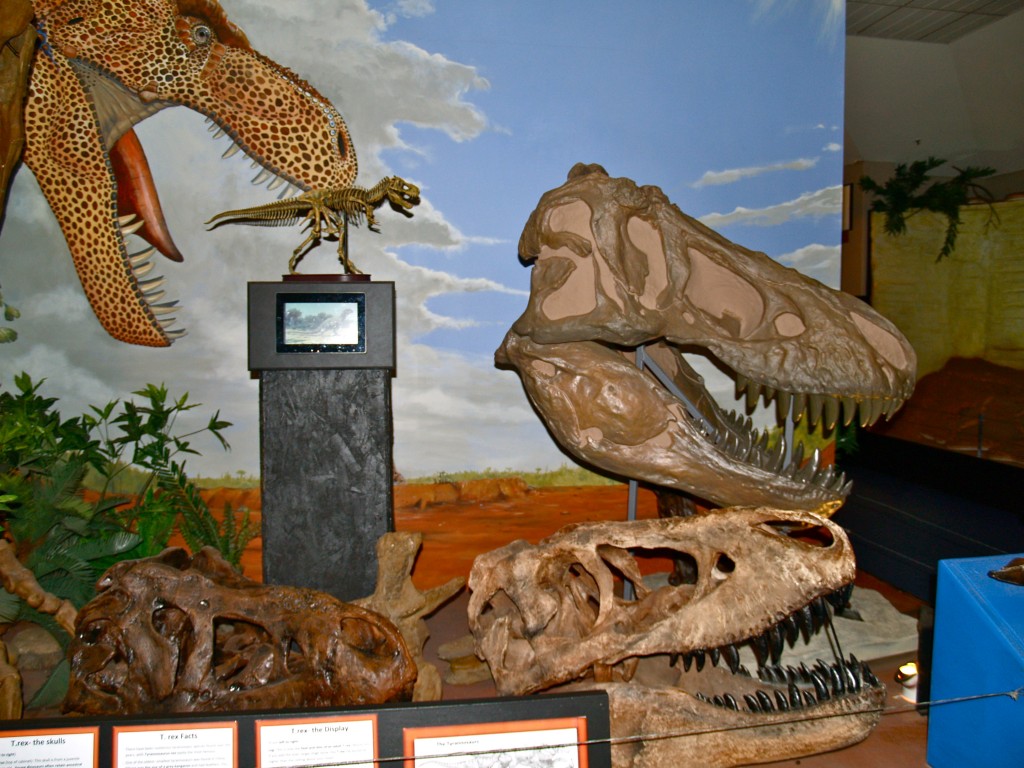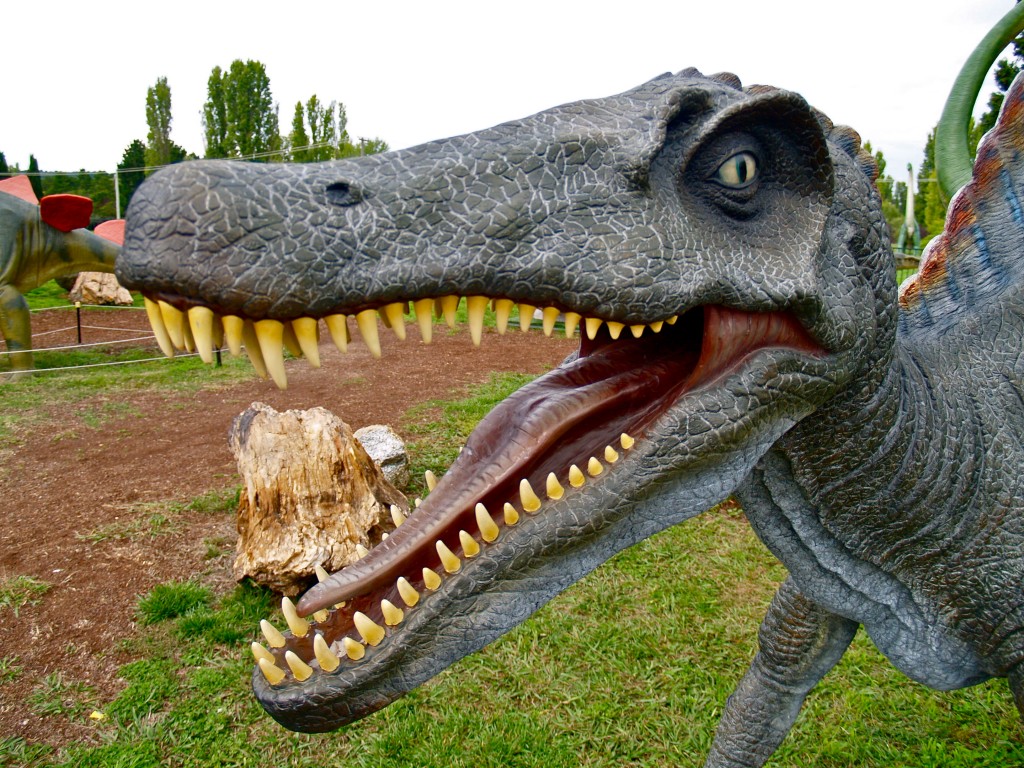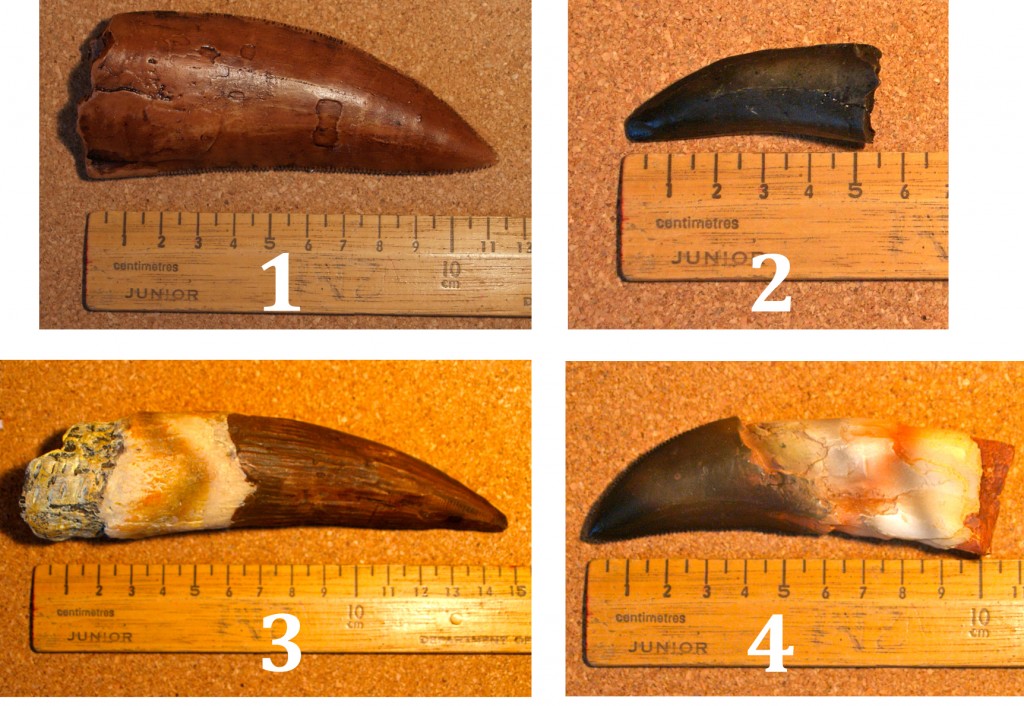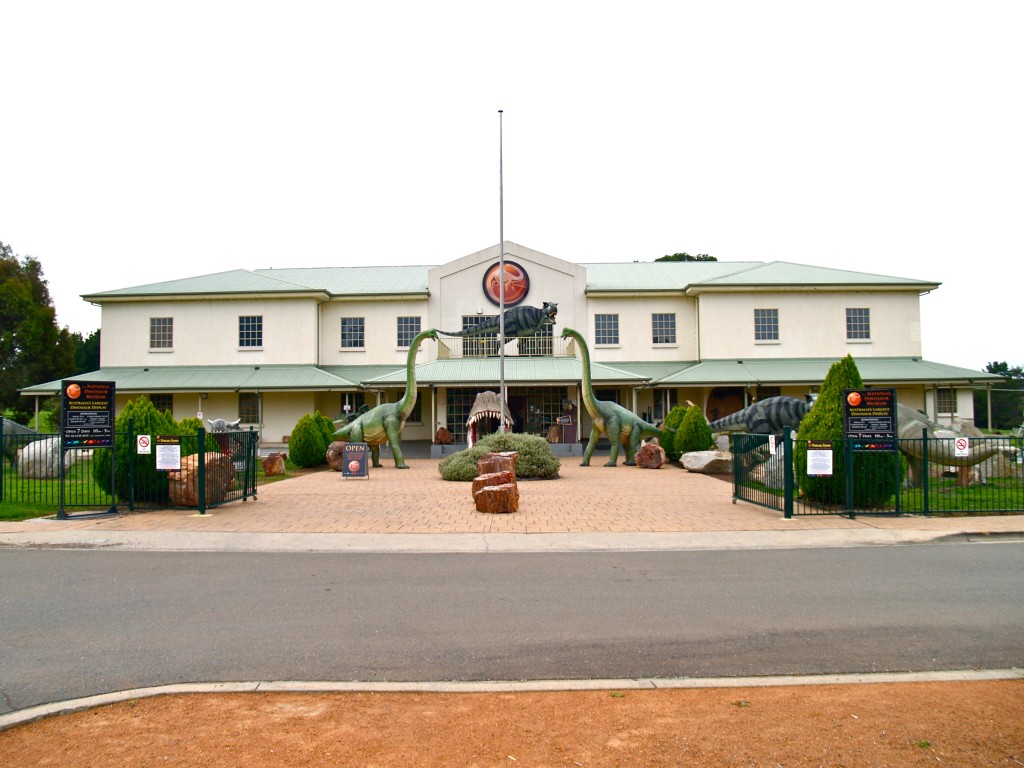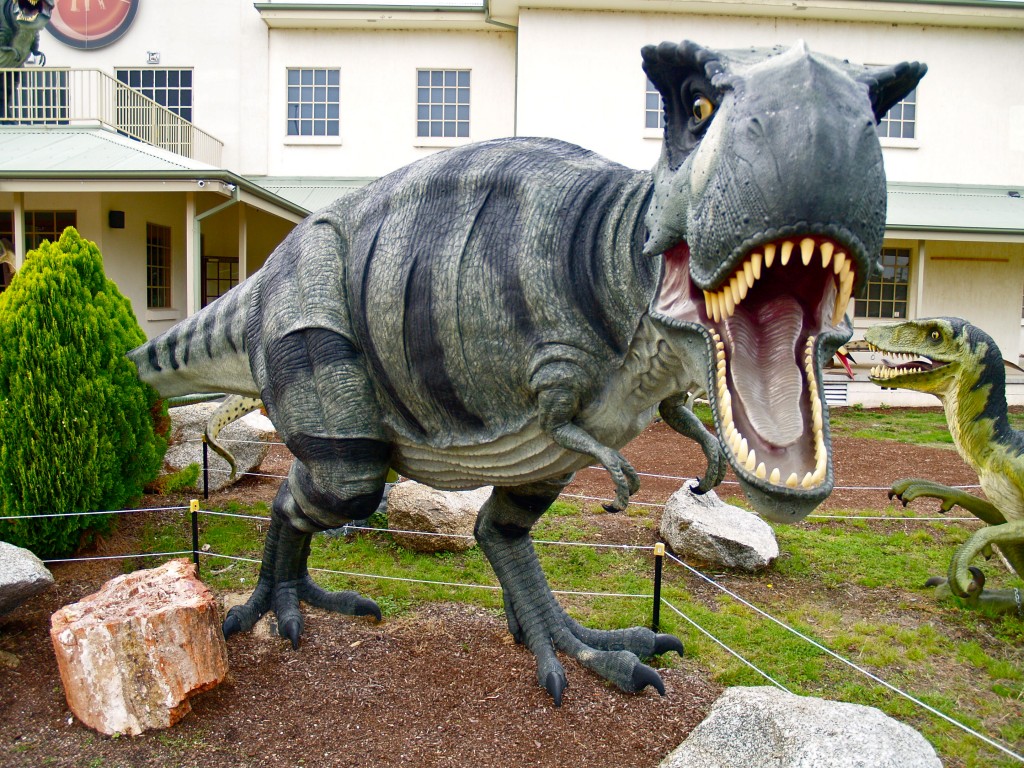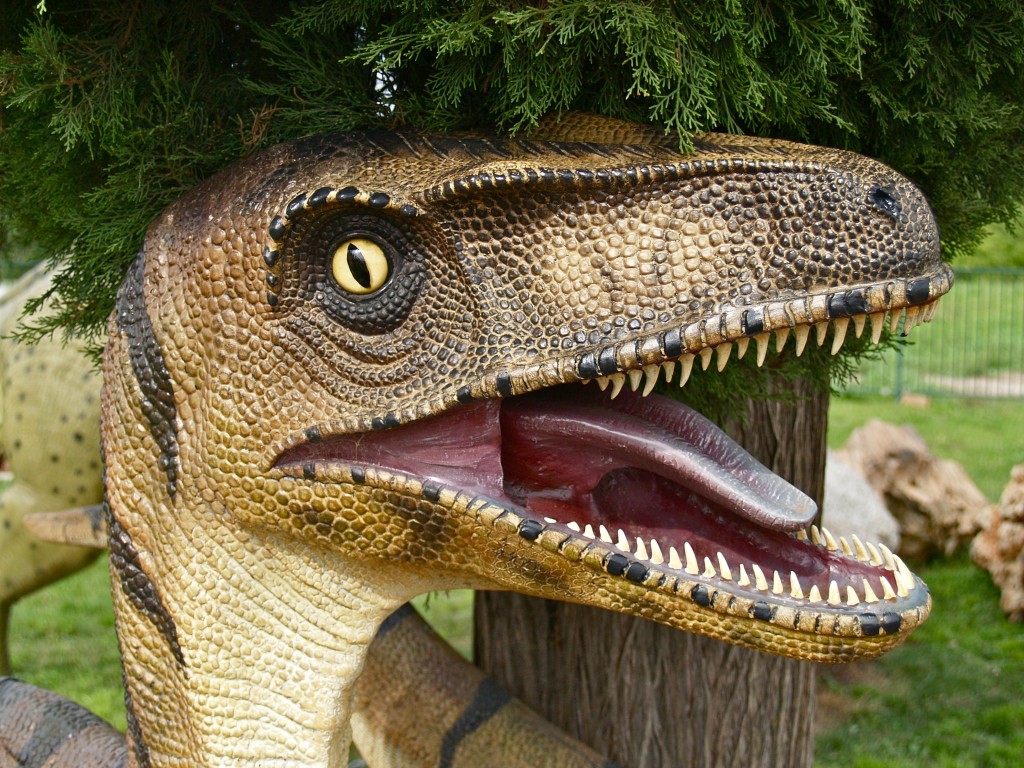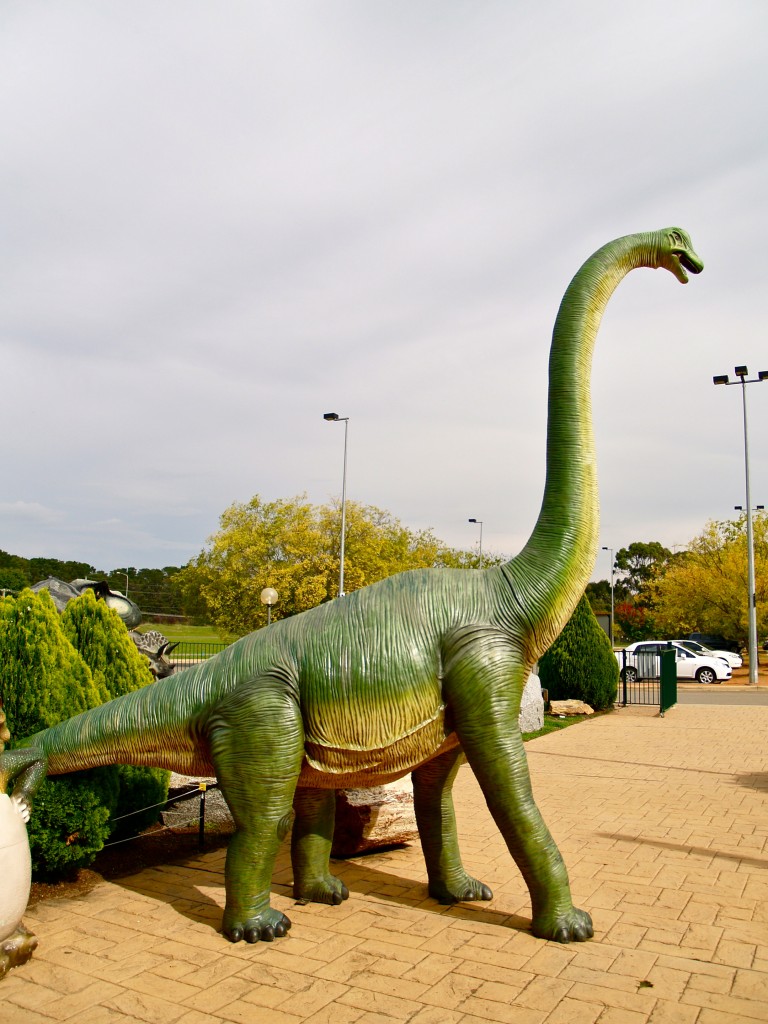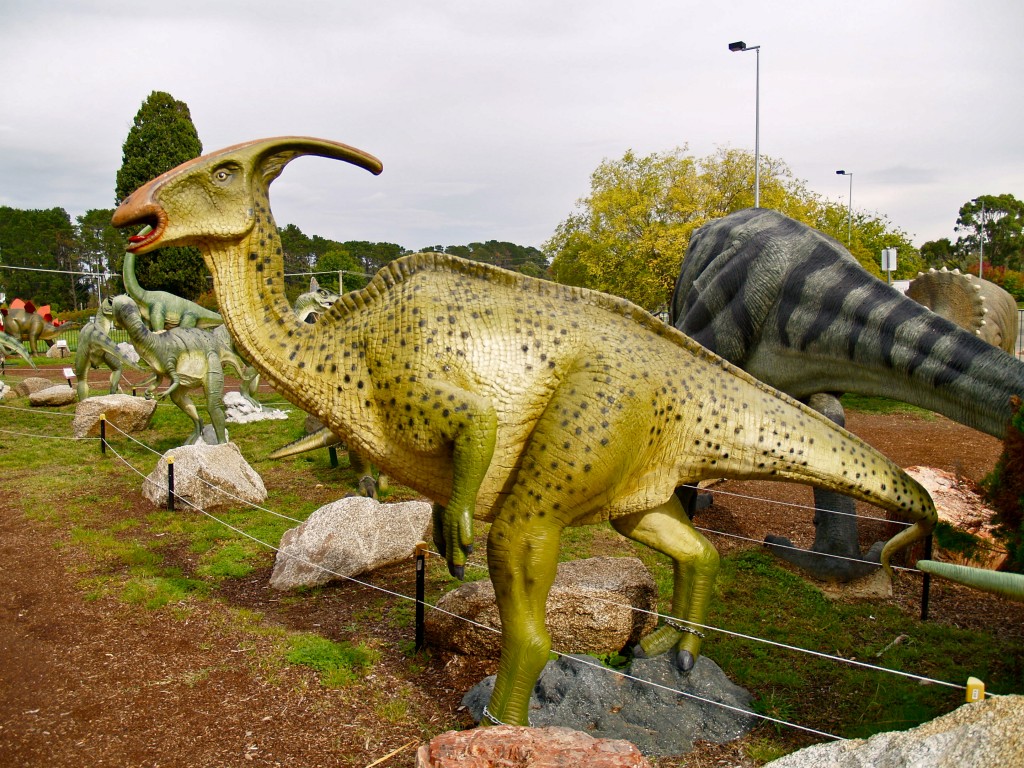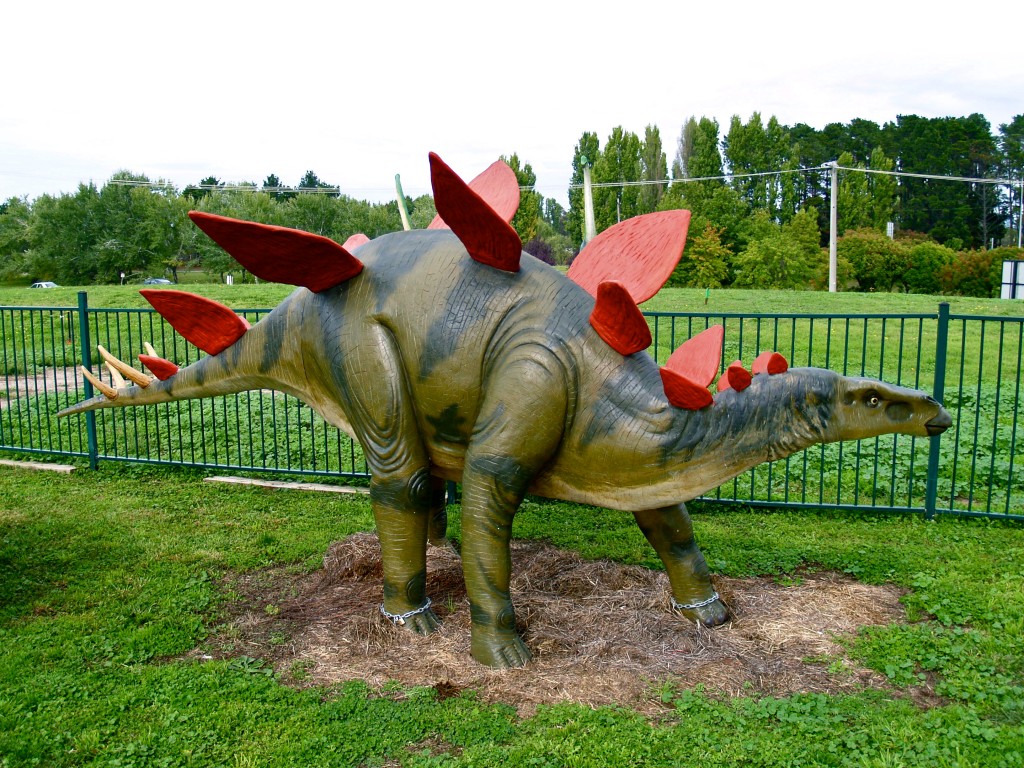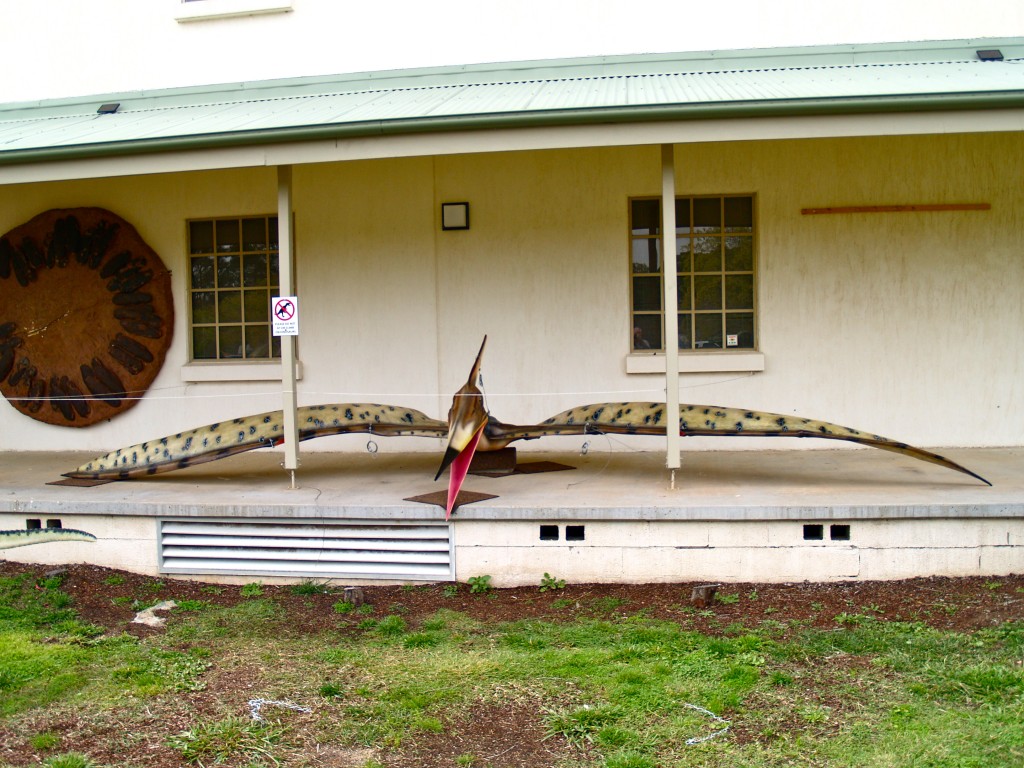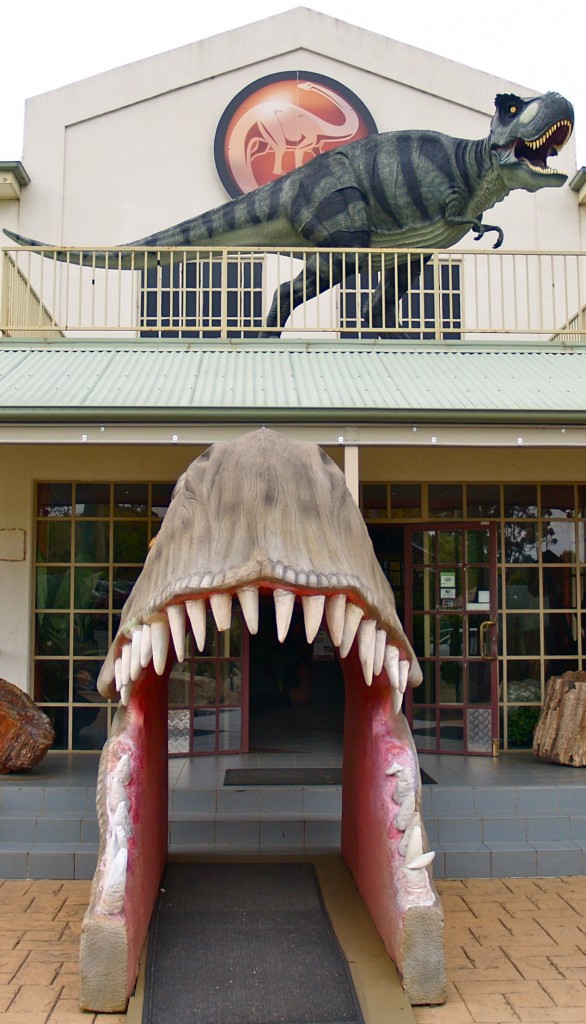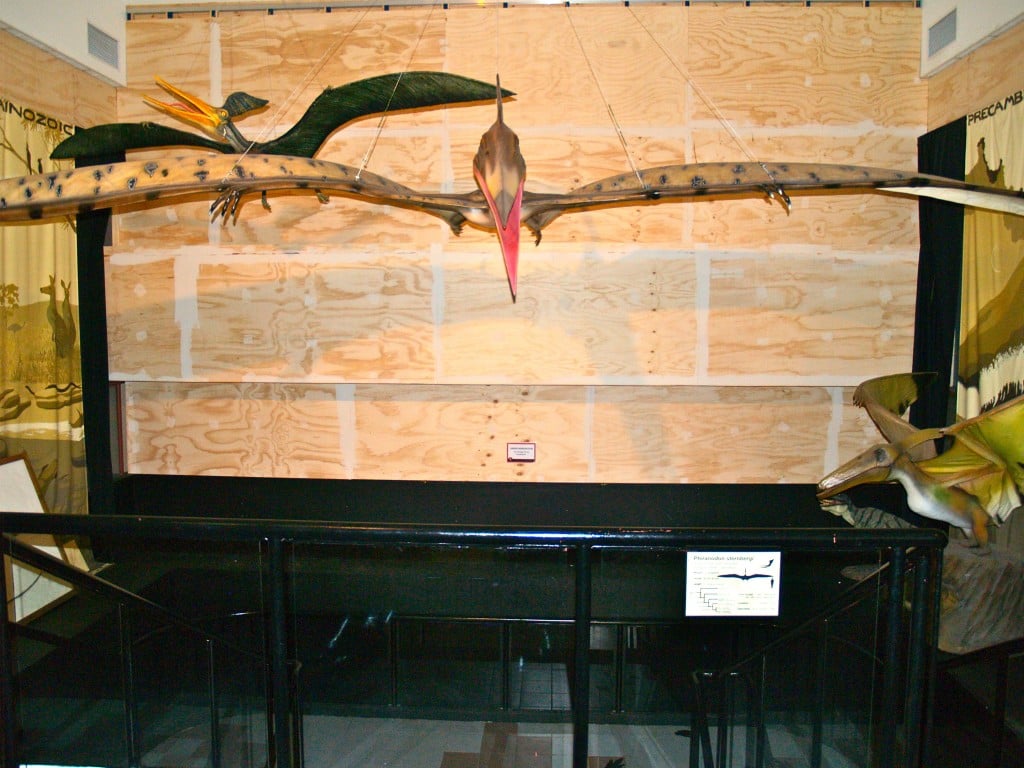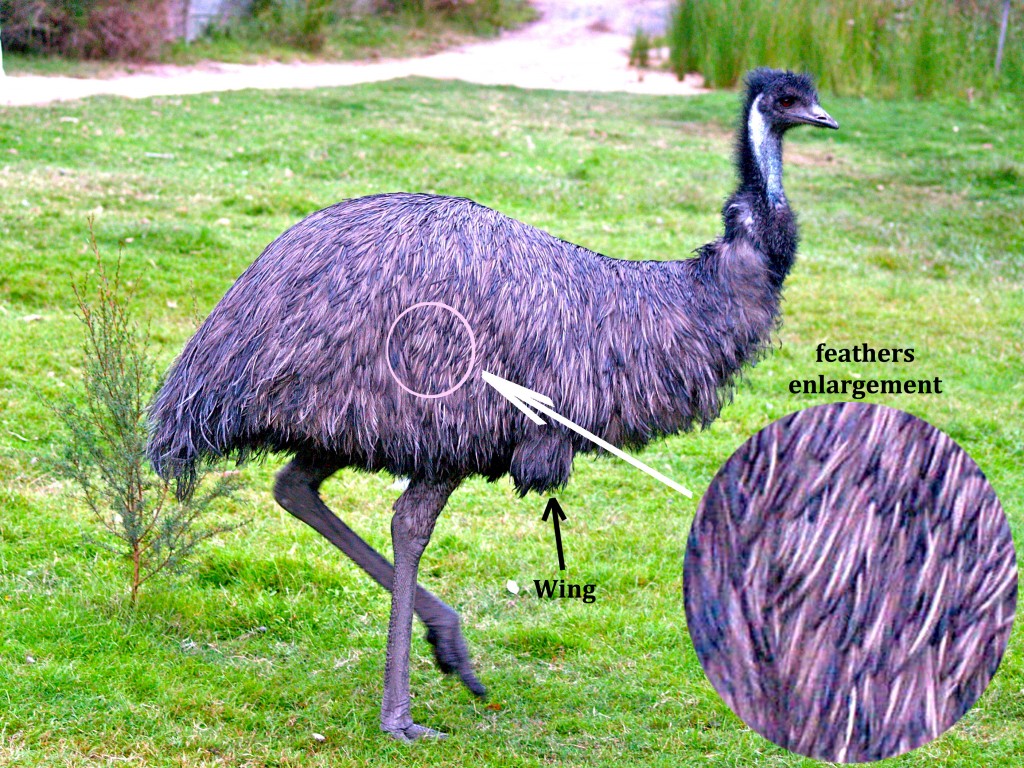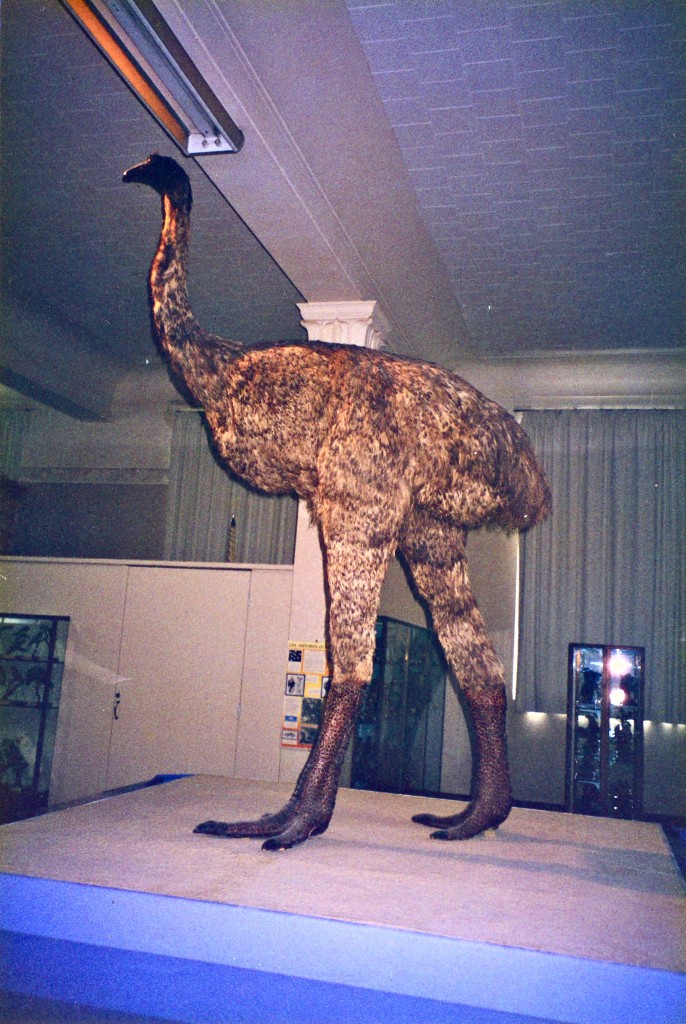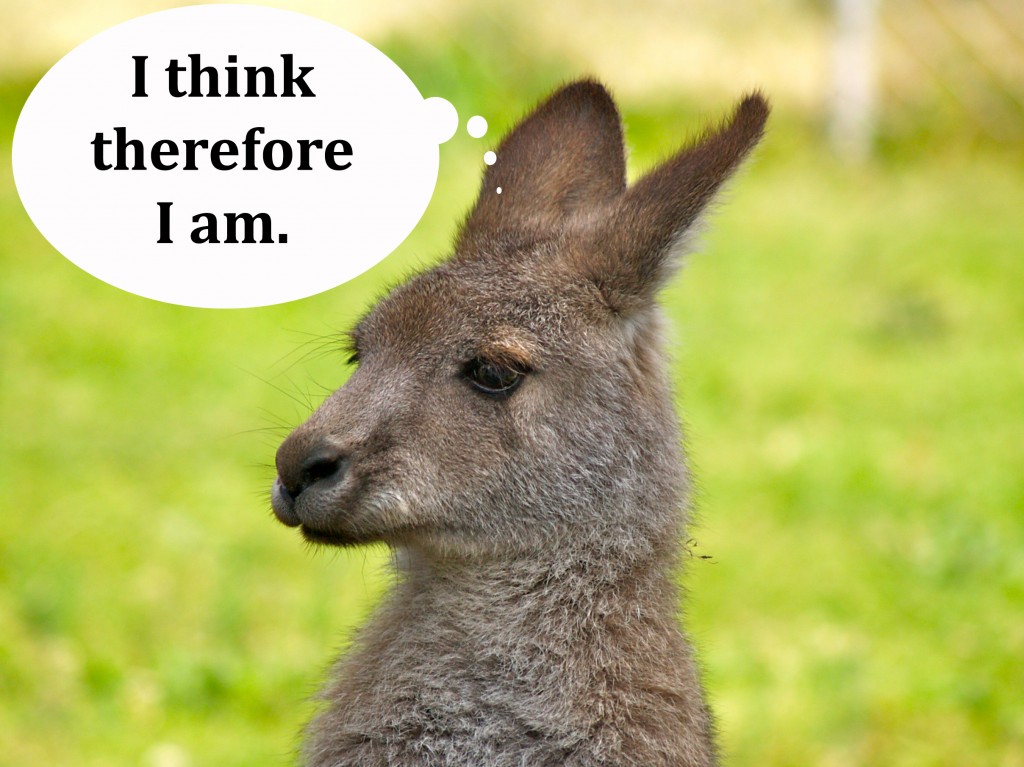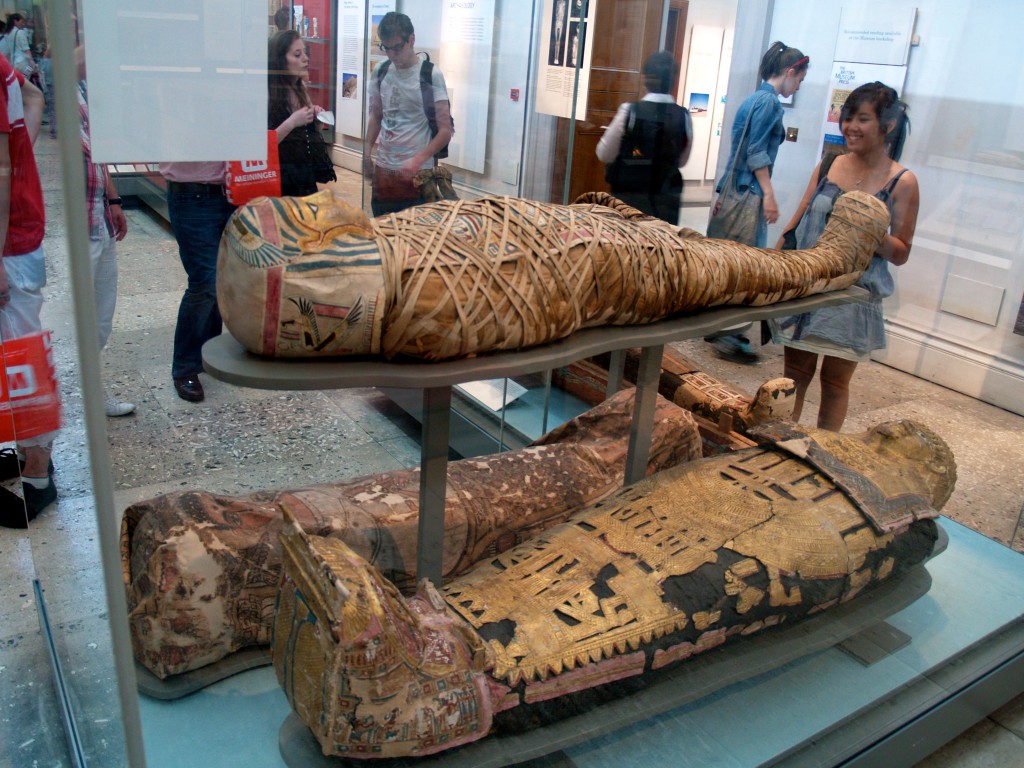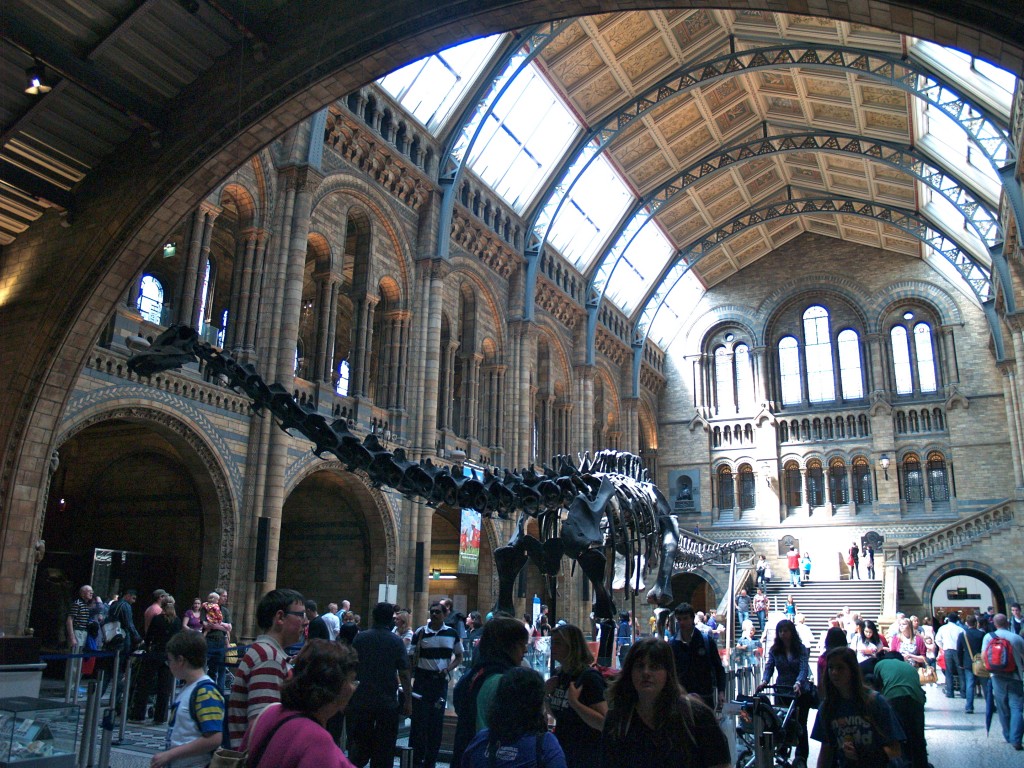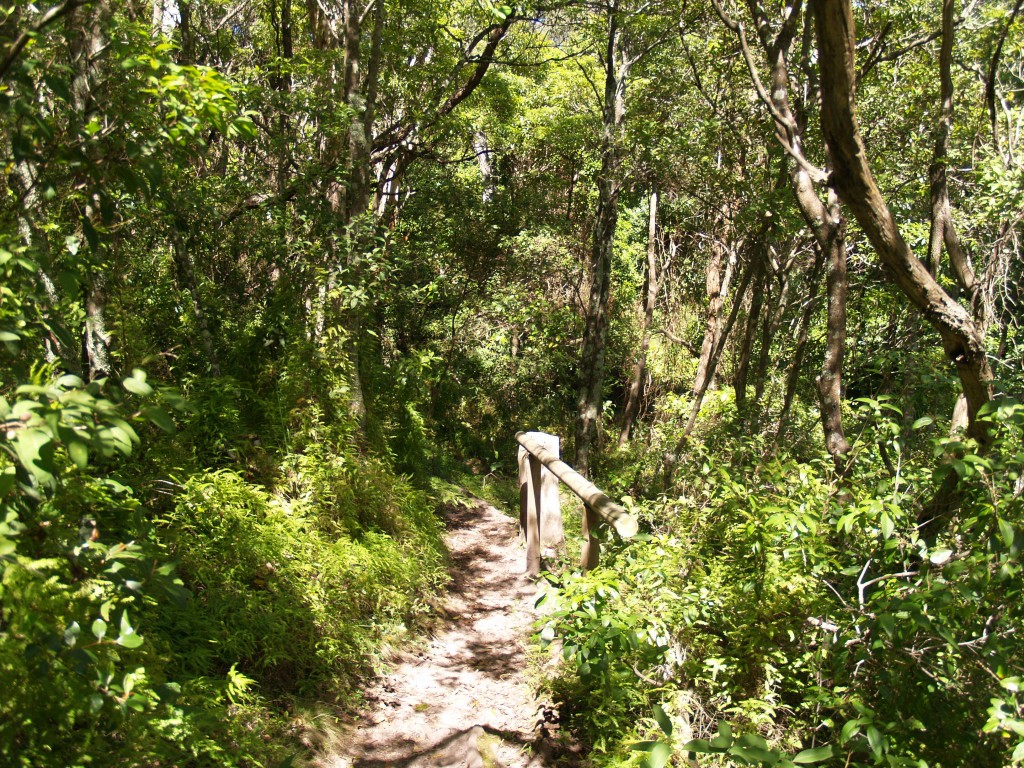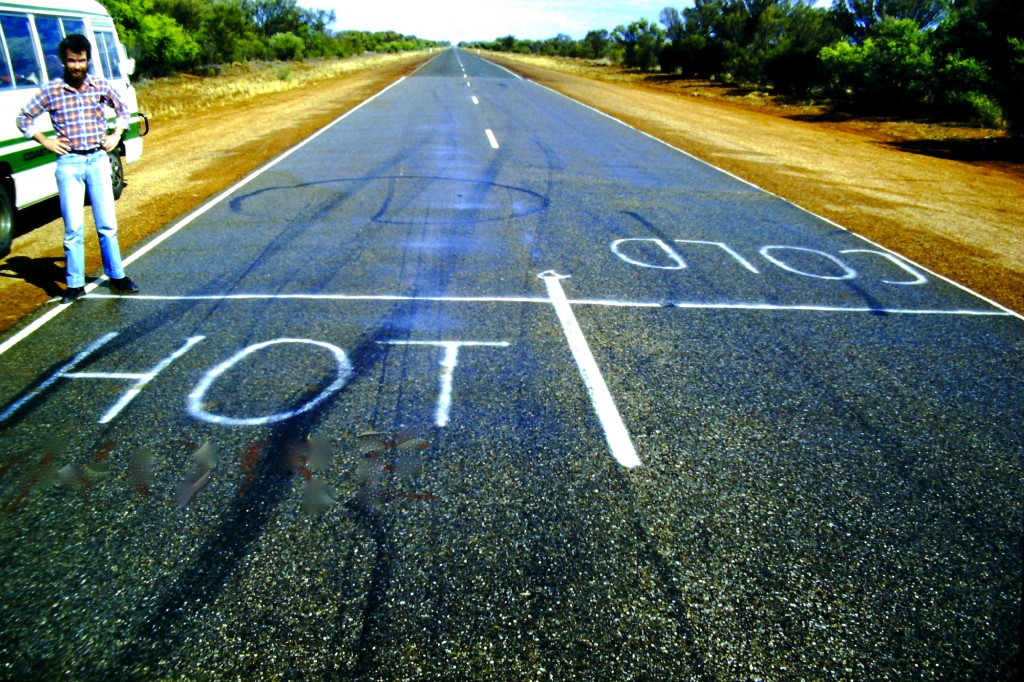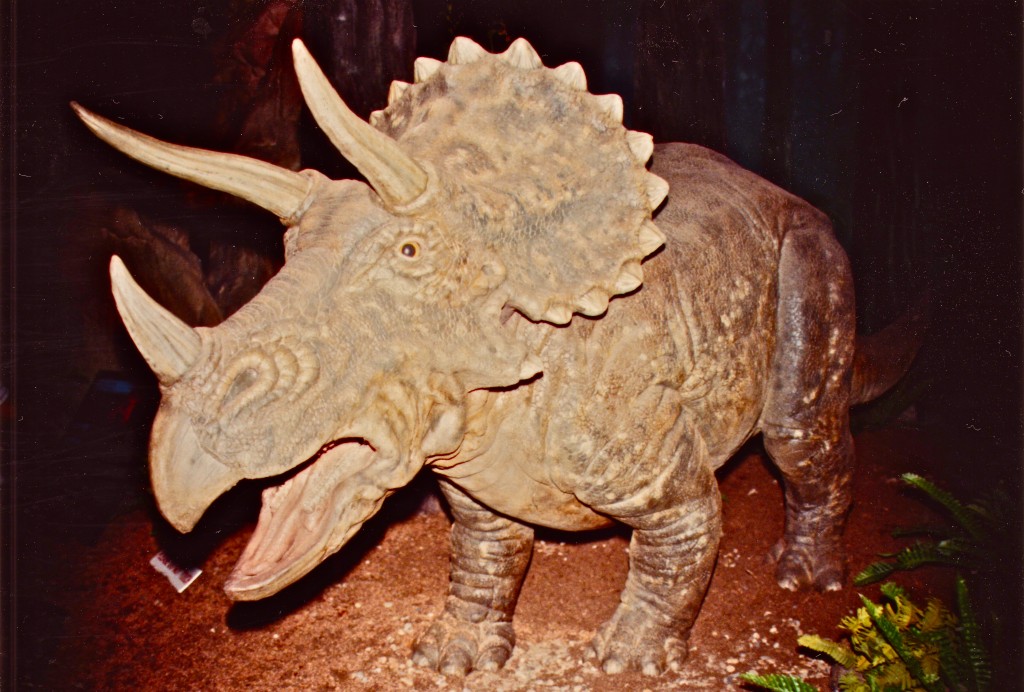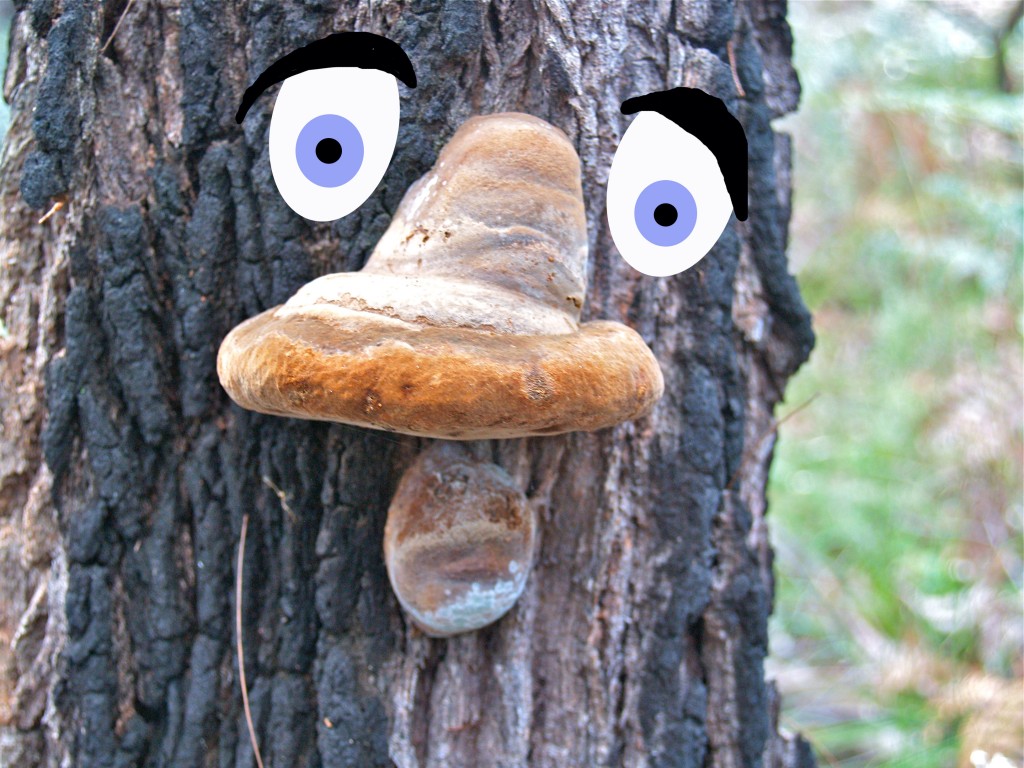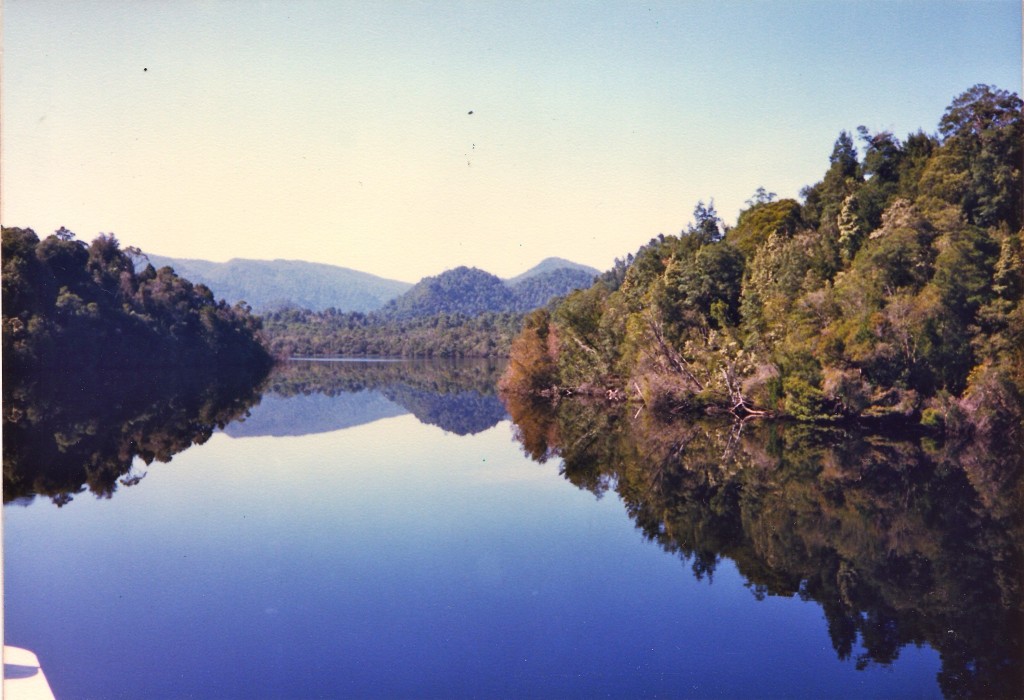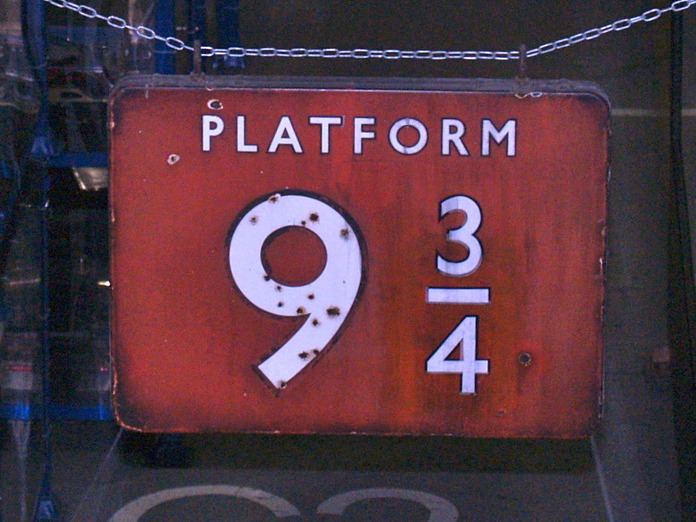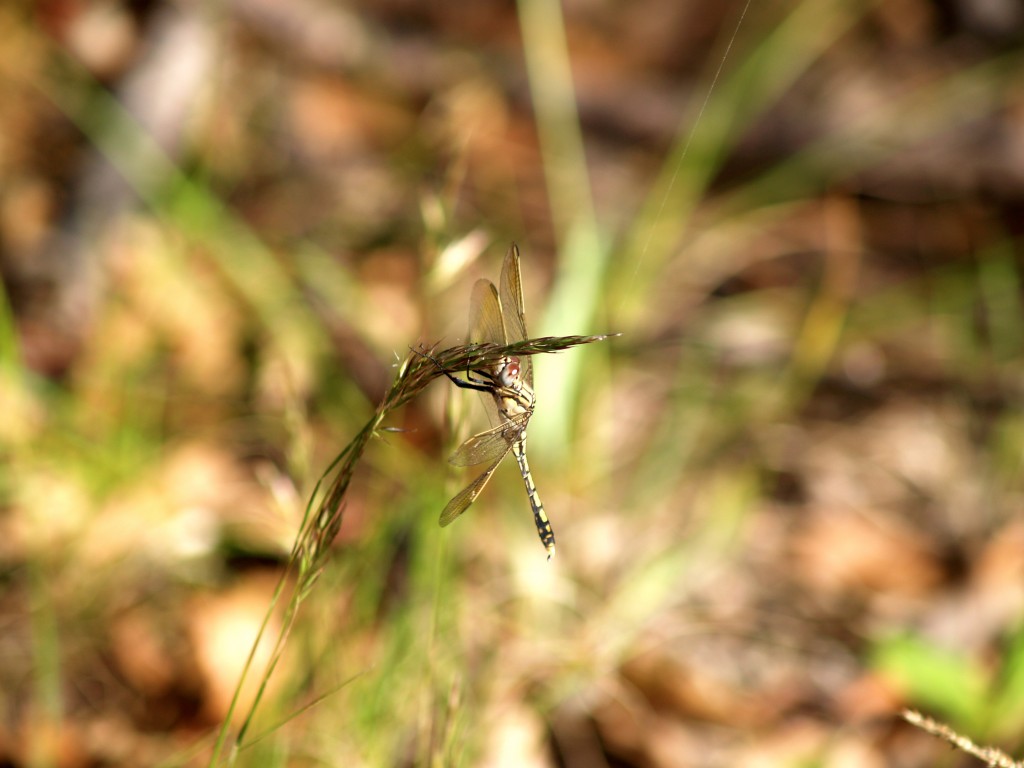Tag Archives: dinosaur
What the Dino Saw… dinosaurs for Year 1/2… National Dinosaur Museum, Canberra
The photos and videos were taken in April, 2014. The displays may have had changes if you visit Canberra's National Dinosaur Museum.
Hello everyone,
I know you are interested in dinosaurs and wanted to learn something about them. Let's start with a visit to Canberra's National Dinosaur Museum. When you arrive, you can see dinosaurs waiting to greet you.
Let's meet some of the dinosaurs waiting outside the museum. If you want to learn more about one of them, you can click on their names under the photo and it will take you to an information page about the dinosaur.
Let's start with an old favourite...
...for more information click the link below...
Tyrannosaurus Rex
* * * * * * * * * * * * * * * * * * * * * * * * *
You may know the tyrannosaurus rex was a carnivore. It ate meat but do you know the meat eating dinosaur below?
...for more information click the link below...
Spinosaurus
* * * * * * * * * * * * * * * * * * * * * * * * *
Not all meat eating dinosaurs were as big as these. Did you know there were smaller dinosaurs who would hunt together? Velociraptors might only be 60cm high and 1.6m long but the Utahraptor was bigger. Let's meet a Utahraptor.
...for more information click the link below...
Utahraptor
* * * * * * * * * * * * * * * * * * * * * * * * *
Not all dinosaurs were meat eaters.
...for more information click the link below...
Brachiosaurus
* * * * * * * * * * * * * * * * * * * * * * * * *
...for more information click the link below...
Parasaurolophus
* * * * * * * * * * * * * * * * * * * * * * * * *
...for more information click the link below...
Stegosaurus
* * * * * * * * * * * * * * * * * * * * * * * * *
Triceratops
* * * * * * * * * * * * * * * * * * * * * * * * *
There were also reptiles that could fly. While not dinosaurs, they soared through the skies...
Pteranodon
* * * * * * * * * * * * * * * * * * * * * * * * *
Now let me show you around the inside of the National Dinosaur Museum. Click on the photo below to go to the next post and see inside the museum...
Things to remember:
We don't really know what colours dinosaurs were. Fossils don't show colour. The colours you see are guesses.
We don't know what sounds the dinosaurs made. Like colour, the sounds are also guesses.
Scientists can make guesses about how dinosaurs looked by looking at fossils.
Some More Thoughts for the Battalion Bloggers
With continued thoughts and questions from the Battalion Bloggers, another post was necessary to answer. To see their initial post and the follow up comments, here is the link...
A Surprise Post Inspires Action
Hello Battalion Bloggers,
There is no need to apologise for taking time to reply. I have seen how many quality experiences you have been having through blogging and know you would be having many other learning experiences in school. When we are keen to learn, there is always something to keep us busy.
Ethan, Isaac & Alex – There was no need to use a zoom lens to take the close up photo of emus. While it isn’t possible with emus in the wild, the photo was taken at Potoroo Palace, my favourite local wildlife sanctuary. I have hand fed emus at the sanctuary so being up close isn’t hard. I have seen emus a little taller than me and I stand 185cm tall so they probably can reach around 2m in height.
Dinosaurs – Well, there’s a coincidence. I am preparing something on dinosaurs for Year 1 and 2 in my local school. It will include a blog post I will also share with your class when it’s ready. It will take time as there is much to prepare. Below is a sample photo I have taken of a friend lurking near a tree at Australia’s National Dinosaur Museum in Canberra…
Kale – I think emus can run up to around 50kph (31mph) so they can run much faster than us. I think the one I saw would have only been running in the 30s.
As far as winged dinosaurs are concerned, there really weren't any. They were flying reptiles like the ones pictured below. When I was your age most thought they could only soar like kites but it has been shown they could really fly and some are known to have had feathers.
Melvin – One of the amazing things about learning is the way we can recall information we may have learned some time ago. That’s one of my secrets in blog commenting. Someone writes something and I remember a fact or two and, with extra research, I start writing a post.
Amy, Catherine & Noam – We don’t tend to see emus walking around wild in my area. However, in my first school as a permanent teacher, I sometimes had to chase emus out of the school playground before children arrived. In the first photo below, you can see my first school. It was 100km from the nearest town. Children lived on sheep and cattle stations.
The second photo shows you a close up of emu feathers. They feel almost furry but, of course, emus have feathers and not fur. You can also see an emu wing but, of course, they can't fly.
Martin and Zyne – Auckland Museum was full of amazing displays of history, culture and nature but it was the moa I most liked to see. It would be amazing to see a living one but, unfortunately, they are now extinct.
Jenna, Hilary and Claire – While I don’t have a photo of my own of the hoatzin adult, below is one accessed from Wikimedia Commons. They are amazing looking birds.
As far as emus go, I really only call them male or female although, as with other birds, you could call females “hens” and males “cocks”. In the post for Daniel, I mentioned males tend to make a grunting sound. I searched through my archive of video clips I have taken and found one where, if you listen carefully, you can hear what I think is the grunting sound of a male emu (on the right of the trio). Soon after Europeans first settled Australia, two species of emu became extinct and fossils show there was a third. The Tasmanian emu was thought to have become extinct in the mid 1800s. What we do have are three types of the one species of emus, Dromaius novaehollandiae novaehollandiae (in the south) and Dromaius novaehollandiae woodwardi (in the north) and Dromaius novaehollandiae rothschildi (in the south-west). Being the same species, they look similar but do have some differences. I will let your class know when I have my dinosaur post ready for my local school.
![By Kate from UK (Hoatzin Uploaded by FunkMonk) [CC-BY-SA-2.0 (http://creativecommons.org/licenses/by-sa/2.0)], via Wikimedia Commons](https://rossmannellcomments.edublogs.org/files/2014/04/1024px-Hoatzin_in_Peru-1q88m8d.jpg)
By Kate from UK (Hoatzin Uploaded by FunkMonk) [CC-BY-SA-2.0 (http://creativecommons.org/licenses/by-sa/2.0)], via Wikimedia Commons
Lane – When you see me write about many different things, I didn’t know about much of what I shared beforehand. It’s the questions people ask that give me the chance to research and learn more. As an example, in the comment above for Jenna, Hilary and Claire, they asked me how many species of emu there are. I did some research and now know there were other species but they have become extinct. We now have only one species with three subspecies. That was my learning from finding the answer. We don’t need to know the answers to everything but we must know how to find answers when we need them.
Peng Peng & Daniel – I’ve always thought the Chinese system of names make more sense when the family name comes first so I would be Mannell Ross rather than Ross Mannell but I didn’t know about family tree differences. My family tree includes both male and female ancestors but the further back in time we go the more my family tree looks like a family forest because there are so many relatives. Look to the end of this post for some big maths about relatives.
There are a number of museums in London. I visited the Natural History Museum, the London Transport Museum, the Science Museum, and the British Museum. There were so many fascinating displays in each I couldn’t choose a favourite. Remember, I’m interested in very many things and took many photos. Here are a few…
Science Museum
British Museum
Natural History Museum
London Transport Museum
Imperial War Museum
Aya, Hannah and Kelly – Like many things in life, I am still learning. Answering your class’s questions, I have learned more facts. We should always keep or minds and eyes open to a world of learning. Writing comments and posts is my way of learning more and sharing what I find. All the knowledge in the world is no use unless we share with others.
What do I like about emus? With the kangaroo, they appear in the Australian Coat of Arms and so are a national symbol and, I think, remind me a little of dinosaurs from the past.
Some extra maths for Peng Peng and Daniel
I once looked at the numbers of parents, grandparents, great grandparents, great great grandparents, etc. we have. Before long, I realised there are so many every human on Earth has to be related to every other human somewhere back in time. Look at this maths…
If we go back only 10 generations (parents to great, great, great, great, great, great, great, great, grandparents) there would be 1024 great, great, great, great, great, great, great, great grandparents.
If we go back 20 generations, there would be 1,048,576 great, great, great, great, great, great, great, great, great, great, great, great, great, great, great, great, great, great grandparents (that’s 18 greats).
Before you think I sat there working out all of this by hand, there is a maths trick we can use in a computer spreadsheet to work this out. If we start a spreadsheet and type the following into a cell,
=2^20
(for 20 generations) it gives you the answer… 1,048,576
=2^10 gives you 1024 for 10 generations
=2^25 gives you 33,554,432 for 25 generations
=2^30 gives you 1,073,741,824 for 30 generations
Can you see how big the numbers are becoming? By only 30 generations, there are over one billion great, great, great, great, great, great, great, great, great, great, great, great, great, great, great, great, great, great, great, great, great, great, great, great, great, great, great, great grandparents (that’s 28 greats).
Before long, there would be more people than there have ever been if everyone was still alive today. This means families marry into others families but, somewhere back in time, they were already related. We are all part of the same family. I am part of a family forest of which you are also part.
The Family Forest
Heather asked if I have ever seen something unusual
For Heather's original post...
Superior Strawberries
Hello Heather,
I think most of us see unusual things in our lives. Unusual means out of the ordinary so it could be something we wouldn't normally see or something we see in an unexpected place or way. I thought I would share a few photos.
The Photos
Some of the photos were taken 20 to 30 years ago. The photo quality isn't high because they were scanned from old colour slides and negatives.
1. If we look at a map of the world, we see the equator drawn around the middle. To the north and south are lines marked as tropics. In the north there is the Tropic of Cancer whereas the tropic to the south of the equator is the Tropic of Capricorn. Any island or nation in between the Tropics of Cancer and Capricorn are said to have a tropical climate. The Tropic of Capricorn passes through Australia's north. When driving a group of parents and children on a 6000km journey to Uluru in Australia's centre and back, we stopped when seeing this line paitned on the road at the Tropic of Capricorn. Some smart person thought it would be funny to write one side was hot and the other cold.
2. In the 1980s I was in New Zealand. I visited a church in Rotorua and saw this wonderfully engraved glass window showing the Moari Jesus walking on the outside lake.
This photo was taken many years back. The last time I visited the church, a sign asked visitors not to take photos inside the church
3. This photo was taken around 30 years again. There had been a storm in the late afternoon. The cloud patterns and colours were amazing.
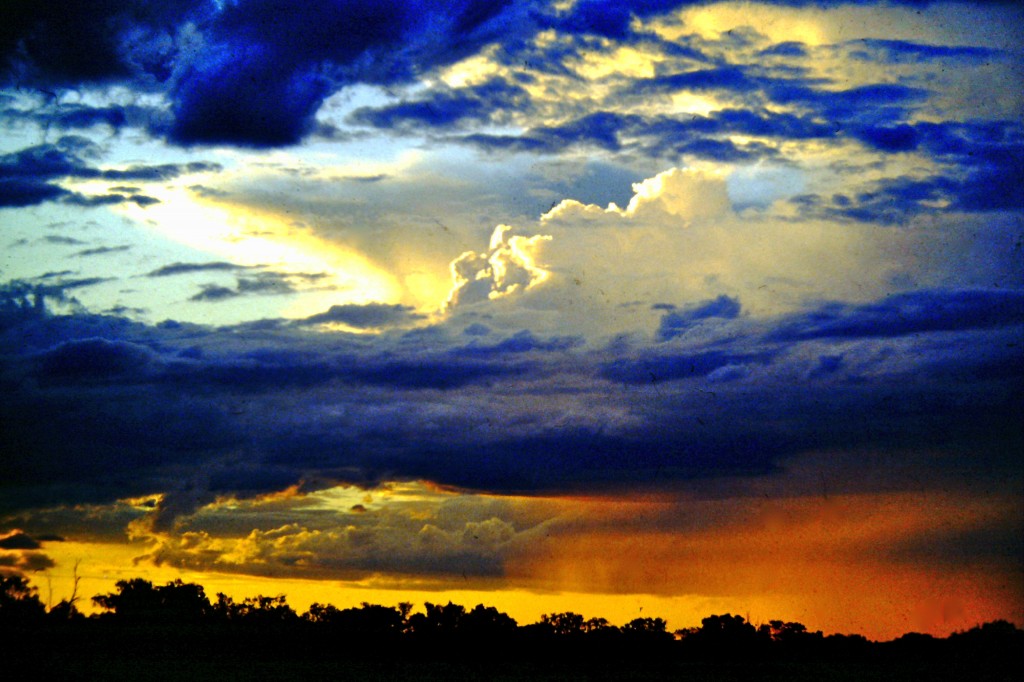
Schools and students have permission to use this graphic for non-commercial, educational purposes.
4. I am not quite old enough to have seen real dinosaurs but this photo from about 25 years ago was of a robotic dinosaur looking very realistic as it moved. Can you imagine seeing a real one?
Schools and students have permission to use this graphic for non-commercial, educational purposes.

